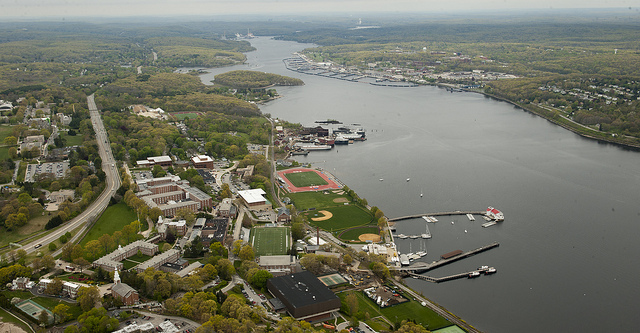In December 2005, NEIWPCC began working with the seven Northeast states on a regional cleanup plan to reduce mercury entering into the states’ waters from a range of pollution sources.
The draft of this plan, the Northeast Regional Mercury Total Maximum Daily Load (TMDL), was released for public comment on April 11, 2007. The EPA finalized the standards in December of 2011.
The plan focuses on reducing atmospheric deposition of mercury so that concentrations of mercury in fish can be reduced to healthier levels. Based on calculations in the TMDL, atmospheric deposition of mercury needs to be reduced by 98 percent from sources both inside and outside of the region in order to meet desired fish tissue concentrations.
Following the release of the TMDL in April, eight public informational meetings were held throughout the region and comments were accepted until June 8. NEIWPCC and the states revised the TMDL based on comments received and produced a final TMDL document that was submitted to EPA on October 24, 2007. The TMDL was approved by EPA on December 20, 2007. A fact sheet summarizing the TMDL’s key components was also completed.
Northeast States §319(g) Petition for Mercury
As a follow up to the Northeast Regional Mercury TMDL, On October 28, 2008, utilizing a never-before-used provision of the Clean Water Act, NEIWPCC and its member states triggered a mandatory process for the U.S. EPA to control the atmospheric deposition of mercury that makes fish throughout the Northeast unsafe to eat.
The states filed a petition with Administrator Johnson under the Clean Water Act’s Section 319(g), which requires U.S. EPA to craft agreements to resolve multi-state pollution issues (see October 2008 Fact Sheet).
The TMDL highlights the need for reductions from out-of-region sources and the 319(g) petition is a tool to implement those reductions. The petition relies upon data from a 2008 report by the Northeast States for Coordinated Air Use Management (NESCAUM), Sources of Mercury Deposition in the Northeast United States, and names eleven out-of-region states that are significantly contributing to mercury impairments in waters of the Northeast. The states and NEIWPCC collaborated to prepare the petition.

Section 319(g) of the law requires the U.S. EPA Administrator to respond to the petition by convening a management conference including all states that are significant sources of the mercury in Northeast waters. The purpose of the conference must be to develop an agreement among such states to reduce the level of pollution and improve the water quality of the New England states and New York State.
This unprecedented multi-state action underscores the determination of the Northeast states to resolve the problem of contaminated fish and to address the main cause—mercury deposited in the Northeast from sources outside the region.
On June 22-23, 2010, in Philadelphia, EPA convened the nation’s first §319(g) management conference, with participation from all the Northeast states, all 11 of the contributing states named in the petition, and representatives from EPA headquarters and EPA Regions 1, 2, 3, 4, and 5.
During the discussions, all the states expressed that they share the problem of widespread fish consumption advisories due to mercury and that they have undertaken numerous mercury reduction activities. However, the states made clear that due to mercury’s capacity to travel long distances via atmospheric currents, a state cannot solve its mercury problem by working alone; collaboration with EPA and other states is vital.
As the conference ended, the participants agreed it was a positive experience and that the dialogue should continue, with NEIWPCC facilitating communication and follow-up activities.
In the ensuing months, NEIWPCC developed a letter to EPA Administrator Lisa Jackson that was sent in November 2010 and signed by our member states and five other states that took part in the conference. The letter requested EPA action on a range of recommendations, most notably the establishment of federal mercury standards for coal-fired power plants.
In March 2011, the EPA formally proposed new mercury and air toxics standards that would require many power plants to install equipment to cut emissions of mercury and other airborne contaminants. These standards were finalized in December 2011—a victory, to be certain, but this issue has not been put to rest.
NEIWPCC and the Northeast states are committed to seeing the process through and continuing to push for a strong federal commitment to mercury reduction.
